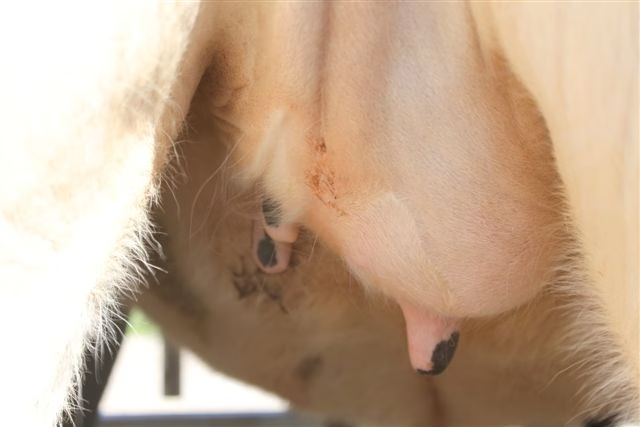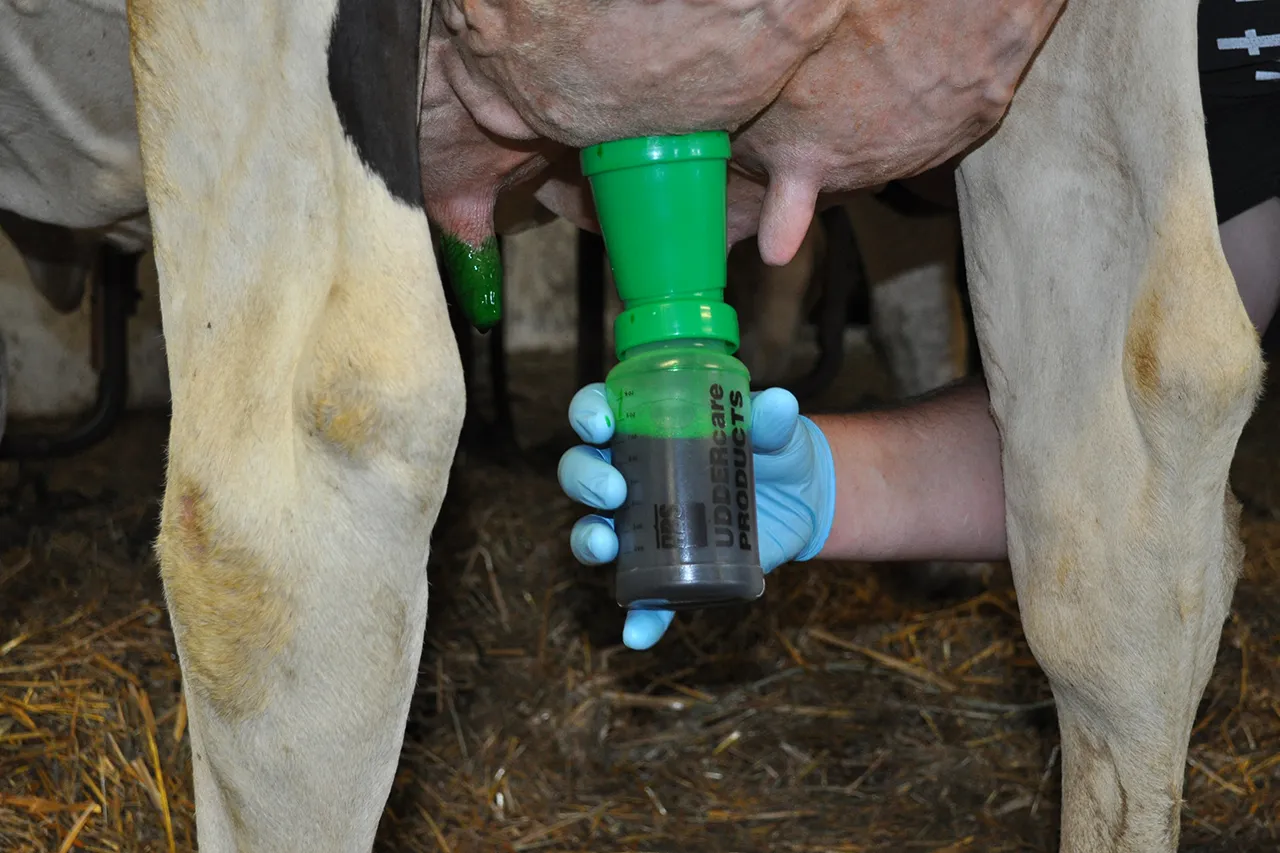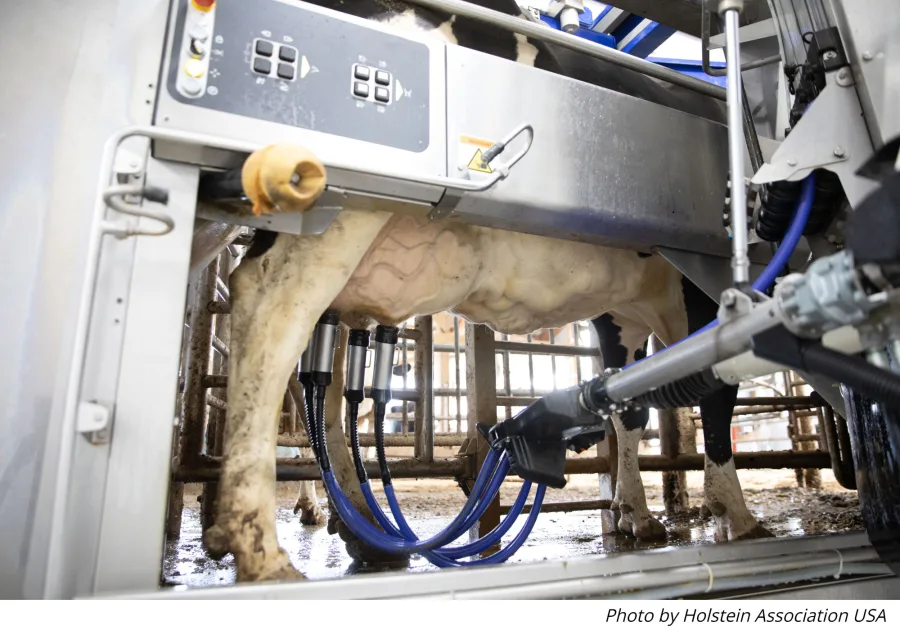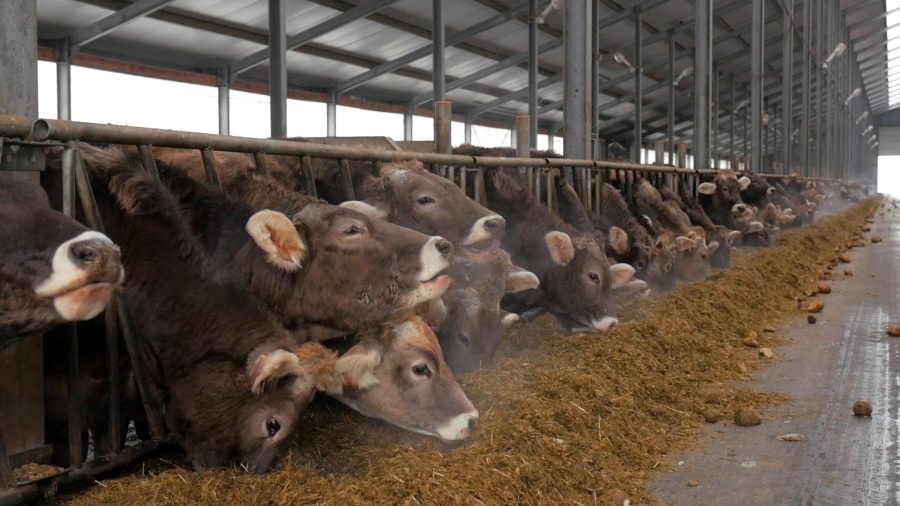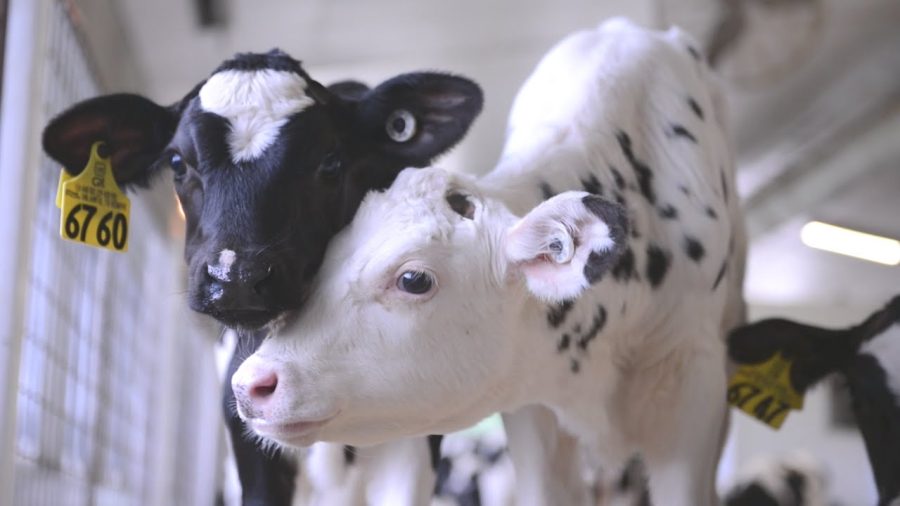Is the summer heat finally over? Discover how dairy farmers see milk production stabilize and what their ongoing challenges are in the changing market.
Summary: As summer draws close, dairy milk production is stabilizing, but the market remains tight, especially for spot milk, which commands premium prices. Cream supplies stay restricted even though butter production has increased. There is a stark contrast in exports: butter has significantly risen, while nonfat dry milk (NDM) exports continue to struggle. Cheese prices have shown resilience after a dip due to fluctuations in milk supply. Whey prices, after reaching multi-year highs, are now declining. Meanwhile, grain and feed prices have seen volatility, impacting producer margins. Farmers must navigate these shifts as fall approaches to capitalize on any market opportunities amid ongoing uncertainties.
- Spot milk remains in high demand, with premiums averaging $1.25 over Class III prices in the Central U.S.
- Butter production increased by 2.8% yearly to 169.2 million pounds in June.
- Despite higher butter production, cream supplies are tight, prompting strategies like micro-fixing.
- Butter exports surged by 31.8% yearly, with notable demand from Canada.
- NDM exports struggled with a 10% decline in June compared to last year.
- Cheese production fell by 1.4% in June, with American types like Cheddar seeing the most significant drops.
- Cheddar block prices recovered from $1.84/lb on Monday to $1.9575/lb by Friday.
- Whey protein isolate production rose 34% yearly, while dry whey production decreased by 7.5%.
- Grain and feed prices experienced volatility but ended the week lower, potentially benefiting farmer margins.

Have you felt the high summer heat strain your cows and your patience? This summer has been a trial by fire for dairy producers, with high temperatures disrupting milk production. The persistent heat stressed out herds and taxed resources, causing productivity drops and narrowing margins. However, as the season progresses and temperatures stabilize, the question remains: are we through, or are there more challenges ahead? Despite some reprieve from the extreme heat, many dairy producers are still dealing with the effects. Tight milk supply and increasing prices exacerbate the continuing issues, keeping everyone on their toes as demand patterns change at the end of summer and the start of autumn. Your perseverance in the face of these hurdles is highly admirable.
| Product | June 2023 Production | % Change Year Over Year | Spot Price (End of Week) |
|---|---|---|---|
| Milk | – | – | $1.25 over Class III prices |
| Butter | 169.2 million lbs | +2.8% | $3.0975/lb |
| Nonfat Dry Milk (NDM) | 188.3 million lbs | -15.1% | $1.20/lb |
| Cheddar Blocks | 1.161 billion lbs | -1.4% | $1.9575/lb |
| Dry Whey | – | -7.5% | $0.5625/lb |
Can You Feel It? The Subtle Shift Signaling the End of Summer
Could you sense it? The slight change in the air indicates the end of summer. Dairy producers around the country are breathing a sigh of relief as the blazing heat starts to subside, returning milk production to normal seasonal levels. However, not everything is going well just yet.
In certain parts of the nation, persistently high temperatures are reducing milk supply, creating a challenge to producers. Despite this, the business is resilient, with farmers working to satisfy demand. The spot milk market is very competitive, with producers paying a premium for more fabulous cargoes. For example, spot premiums in the Central United States are averaging $1.25 more than Class III pricing, up from last year.
This tight milk market is exacerbated by impending bottling facilities preparing for the school year. The strain is on, and as a dairy farmer, you probably feel it physically and metaphorically. How are you handling these fluctuations? Do these changes affect your production and costs?
Spot Milk Becomes the Season’s ‘White Gold’ as Demand Skyrockets
| Month | Class III Milk Price ($/cwt) |
|---|---|
| May 2024 | $18.23 |
| June 2024 | $18.06 |
| July 2024 | $18.84 |
| August 2024 | $19.30 |
Spot milk remains a popular item as the summer comes to an end. Many places have limited supply, forcing firms to pay a premium for more shipments. How much more, you ask? Dairy Market News reports that spot premiums in the Central United States average $1.25 over Class III pricing. That’s a 25-cent increase from last year. This increase is not a coincidence; it directly results from the persistent heat and humidity wreaking havoc on milk production. Given these challenges, it’s no surprise that demand and prices are soaring as the autumn season approaches.
The Never-Ending Demand: Cream Supplies Stay Tight Despite Butter Production Boost
Despite an increase in the butterfat composition of the milk supply, cream supplies have been somewhat limited this summer. It’s a mixed bag; although greater component levels have increased butter output, the availability of additional cream loads remains limited. Butter output in June increased by 2.8% yearly to 169.2 million pounds. Nonetheless, butter manufacturers nationwide strongly need an increased cream supply to satisfy production demands. The need for cream is never-ending—as soon as it rises, it’s gone, leaving everyone hungry for more.
The Resilient Butter Market: Stability Amid Seasonal Shifts
| Week Ending | Butter Market Price ($/lb) |
|---|---|
| June 7, 2024 | $2.75 |
| June 14, 2024 | $2.85 |
| June 21, 2024 | $2.90 |
| June 28, 2024 | $2.95 |
| July 5, 2024 | $3.00 |
| July 12, 2024 | $3.05 |
| July 19, 2024 | $3.10 |
| July 26, 2024 | $3.07 |
| August 2, 2024 | $3.09 |
| August 9, 2024 | $3.10 |
The butter market has remained remarkably stable despite the periodic ebb and flow. The spot price at the Chicago Mercantile Exchange (CME) finished at $3.0975, down 0.75¢ from the previous week. While these data point to a relatively steady industry, there are still worries regarding future demand. With the baking and holiday season approaching, stakeholders will be watching closely to see whether retail activity picks up to match the expected increase in consumer demand. Will the market remain stable, or will there be a mad rush to buy more stocks? Stay tuned as the next several months expose the fundamental dynamics at work.
Butter’s Star Rises While NDM Fades: A Tale of Two Exports
| Month | Butter Exports (million pounds) | NDM Exports (million pounds) |
|---|---|---|
| June | 6.8 | 134.4 |
| Year-over-Year Change | +31.8% | -10% |
Butter and nonfat dry milk (NDM) exports present a stark difference. Butter’s success has been nothing short of amazing, with exports up 31.8% in June, primarily due to rising demand from Canada. In concrete terms, it amounts to up to 6.8 million pounds sent overseas.
However, NDM exports are failing. They fell 10% compared to the same month last year, resulting in the lowest June volume since 2019. The United States shipped just 134.4 million pounds of NDM in June.
While a strong market drives butter exports, the NDM industry struggles with low demand. This lackluster performance has kept NDM spot prices relatively stable, preventing a substantial surge. Furthermore, the year-to-date results for NDM exports are down 11.6% from the previous year.
The NDM Puzzle: Low Supply Matches Tepid Demand, Keeping Prices Static
| Week Ending | NDM Spot Price ($/lb) |
|---|---|
| August 9, 2024 | 1.20 |
| August 2, 2024 | 1.24 |
| July 26, 2024 | 1.22 |
| July 19, 2024 | 1.25 |
| July 12, 2024 | 1.18 |
| July 5, 2024 | 1.21 |
The supply and demand dynamics for nonfat dry milk (NDM) have been intriguing. Demand has been tepid, but so has the supply. In June, combined production of NDM and skim milk powder totaled only 188.3 million pounds, marking a significant 15.1% decrease from last year. However, this decline hasn’t yet led to a price surge, primarily because demand hasn’t picked up its pace.
The spot price for NDM seems trapped in a tight range. Despite last week’s brief price rally, the NDM spot price dipped on four out of five trading days, losing 4 cents over the week to close at $1.20 per pound. During this period, 27 powder loads were traded, a notably high activity, with 17 loads moving on Tuesday alone. The low supply and weak demand keep everyone guessing when the market might see a dynamic shift.
Cheese’s Comeback Story: From Dips to Resilience and Everything In Between
| Product | Beginning of Week Price (Aug 5, 2024) | End of Week Price (Aug 9, 2024) | Price Change |
|---|---|---|---|
| Cheddar Blocks | $1.84/lb | $1.9575/lb | +10.75¢ |
| Cheddar Barrels | $1.93/lb | $2.005/lb | +7.5¢ |
Recently, cheese markets have shown to be quite resilient. Despite a decrease to $1.84/lb on Monday—the lowest since May—cheddar block prices returned to $1.9575/lb on Friday, representing a 10.75¢ rise from the previous week.
Overall, cheese exports started to drop in June. U.S. exporters delivered 85.7 million pounds of cheese overseas, a 9.1% rise yearly but lower than prior months’ record highs. Mexican demand remained strong, with 31.6 million pounds shipped, but down from May’s record of 40.4 million pounds.
Production data also show a slight decline. June witnessed a 1.4% year-over-year decrease to 1.161 billion pounds, with American cheeses, notably Cheddar, bearing the brunt of the downturn. Despite these obstacles, the cheese market’s essential stability remains, providing a bright spot in an otherwise complicated environment of shifting pricing and variable export levels.
Whey’s Wild Ride: From Multi-Year Highs to a Slow Descent
| Week Ending | Spot Price per Pound (¢) |
|---|---|
| August 9, 2024 | 56.25 |
| August 2, 2024 | 61.00 |
| July 26, 2024 | 58.00 |
| July 19, 2024 | 53.00 |
| July 12, 2024 | 55.75 |
| July 5, 2024 | 60.00 |
Despite prior highs, the dry whey market has significantly decreased this week. From Tuesday to Friday, the spot price progressively declined. By the end of the week, it had been reduced to 56.25¢ per pound, down 4.75¢ from the previous Friday.
Several causes have contributed to the current decline. Reduced cheese production has had a substantial influence on the whey stream. As cheese manufacturing slows, the supply of whey—a byproduct—dwindles. Manufacturers are also concentrating more on high-protein goods such as whey protein isolates, with production up 34% yearly in June.
Furthermore, export demand for whey remains high. Recovering pork prices in China has sparked a rebound in hog breeding, increasing demand for dry whey and permeate as piglet feed. This strong demand has helped to maintain market tension even as prices fall. The following weeks will indicate whether these dynamics have stabilized or continue distorting pricing.
Let’s Talk Grains and Feed: Did You Notice the Recent Jolt in Corn and Soybean Futures?
| Date | Corn Futures (DEC24) | Soybean Futures (DEC24) |
|---|---|---|
| August 5, 2024 | $4.02/bu | $10.25/bu |
| August 6, 2024 | $4.01/bu | $10.22/bu |
| August 7, 2024 | $4.00/bu | $10.18/bu |
| August 8, 2024 | $3.99/bu | $10.10/bu |
| August 9, 2024 | $3.97/bu | $10.08/bu |
Let’s discuss cereals and feed. Did you see the recent spike in maize and soybean futures? Monday’s market pandemonium spiked, but don’t get too excited—it didn’t stay. By Thursday, DEC24 corn futures had dropped to $3.97/bu, down nearly a cent from the previous week’s closing. Soybeans settled at $10.0825/bu., down roughly 20¢ from last Friday.
Despite the market instability, the drop in grain and feed costs is encouraging. Lower pricing might offer producer profits the boost they urgently need. When your inputs are less expensive, you may boost your earnings. Could this imply brighter days for your bottom line? We will have to wait and see.
Brace Yourself for Fall: Market Dynamics and Environmental Factors That Could Shake Things Up
As we enter the winter months, dairy producers can expect a combination of market dynamics and environmental variables. The recent stability of milk output suggests that things are returning to normal, but don’t get too comfortable. Experts believe that demand for spot milk will stay strong owing to increasing bottling operations once schools resume. This might keep milk premiums high, reducing profit margins even further. Cream supplies are anticipated to remain limited, especially as butter production increases. While this may benefit butter producers, people relying on cream can expect continued shortages and increased prices.
Do not anticipate a significant increase in nonfat dry milk (NDM). Prices will remain stable as supply and demand are in a holding pattern. However, there is a ray of light as several Southeast Asian regions see growing demand. Despite recent turbulence in global stocks, cheese markets seem to have stabilized. The present prices are stable, but increased prices may ultimately reduce demand. Keep a watch on exports; they’ve dropped but remain robust, especially in Mexico.
Finally, the grain and feed markets have seen short rises before returning to their previous levels. This change may reduce feed prices, which is always good news as we approach a season in which every penny matters. Dairy producers should be careful. The market is a complicated web of possibilities and problems, ranging from limited cream supply to steady cheese pricing and fluctuating grain markets. Prepare for a tumultuous few months, and keep an eye on market signals to navigate this complex terrain effectively.
Surviving the Roller Coaster: How Dairy Farmers Can Profit Amid Market Chaos
The current market circumstances have critical economic ramifications for dairy producers. Price fluctuations in milk, butter, cheese, and other dairy products may substantially influence farm profitability. As spot milk becomes the season’s ‘white gold’, with manufacturers paying premiums for more loads, milk sales income may rise. On the other hand, tighter supplies may put farmers under pressure, particularly in the heat of late summer. High butter prices provide some comfort but create concerns about future demand as retail activity for the baking and holiday season gradually increases.
So, how can farmers deal with these economic challenges? Diversify product offers to ensure consistent cash sources. Instead of focusing on a single dairy product, diversify into butter, cheese, and whey protein isolates. Diversification may protect against price volatility in any particular category. Stay informed about industry developments and export prospects. Recognize demand increases in Southeast Asia for milk powder or rising butter demand from Canada to use resources more wisely.
Invest in technology and process upgrades to boost manufacturing efficiency. Use data analytics to forecast trends, stress-resistant feed to keep yields high during harsh weather, and invest in sustainable practices to satisfy regulatory requirements. Farmers may effectively handle economic changes by taking a proactive strategy that includes diversification, trend research, and strategic investments.
The Bottom Line
As we go through these cyclical adjustments, essential conclusions emerge. Milk production has mostly returned to normal. However, regional heat remains a cause of disturbance. The struggle for spot milk heats up, with cream and cheese markets showing mild resistance. Butter production expands after the summer, but NDM fails to gain momentum. Despite price volatility, the cheese business has experienced a spectacular recovery, although grain and feed costs vary, reflecting the more significant market uncertainty. So, what does this mean for you, a dairy farmer? It is essential to remain alert and adaptable. Are your operations prepared to endure market swings and capitalize on new opportunities? Stay informed and adaptive, and keep an eye on market trends. The dairy industry is continuously evolving; being prepared might make a difference. What strategies will you use to flourish in these uncertain times?









